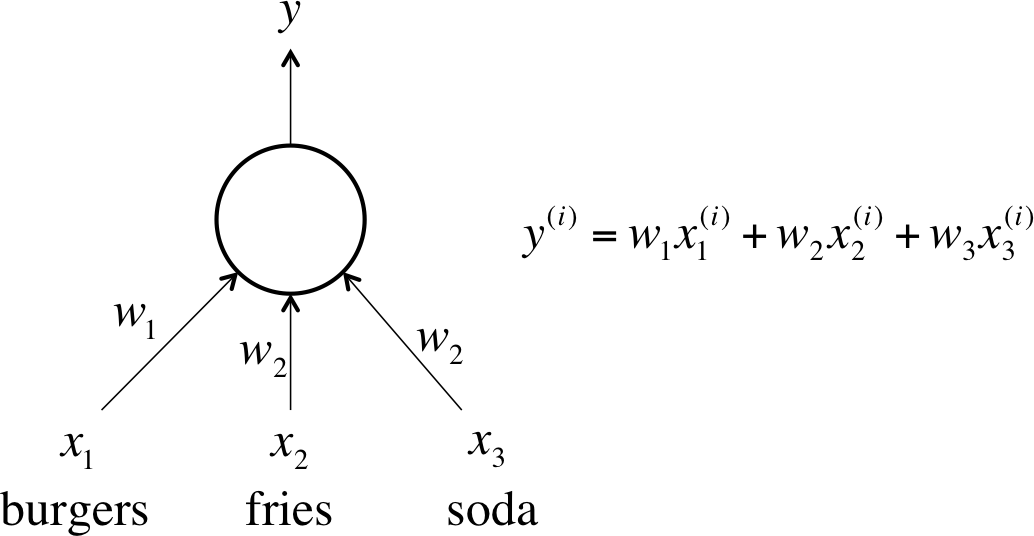Chapter 2. Training Feed-Forward Neural Networks
The Fast-Food Problem
We’re beginning to understand how we can tackle some interesting problems using deep learning, but one big question still remains: how exactly do we figure out what the parameter vectors (the weights for all of the connections in our neural network) should be? This is accomplished by a process commonly referred to as training (see Figure 2-1). During training, we show the neural net a large number of training examples and iteratively modify the weights to minimize the errors we make on the training examples. After enough examples, we expect that our neural network will be quite effective at solving the task it’s been trained to do.

Figure 2-1. This is the neuron we want to train for the fast-food problem
Let’s continue with the example we mentioned in the previous chapter involving a linear neuron. As a brief review, every single day, we purchase a restaurant meal consisting of burgers, fries, and sodas. We buy some number of servings for each item. We want to be able to predict how much a meal is going to cost us, but the items don’t have price tags. The only thing the cashier will tell us is the total price of the meal. We want to train a single linear neuron to solve this problem. How do we do it?
One idea is to be intelligent about picking our training cases. For one meal we could buy only a single serving ...
Get Fundamentals of Deep Learning now with the O’Reilly learning platform.
O’Reilly members experience books, live events, courses curated by job role, and more from O’Reilly and nearly 200 top publishers.

